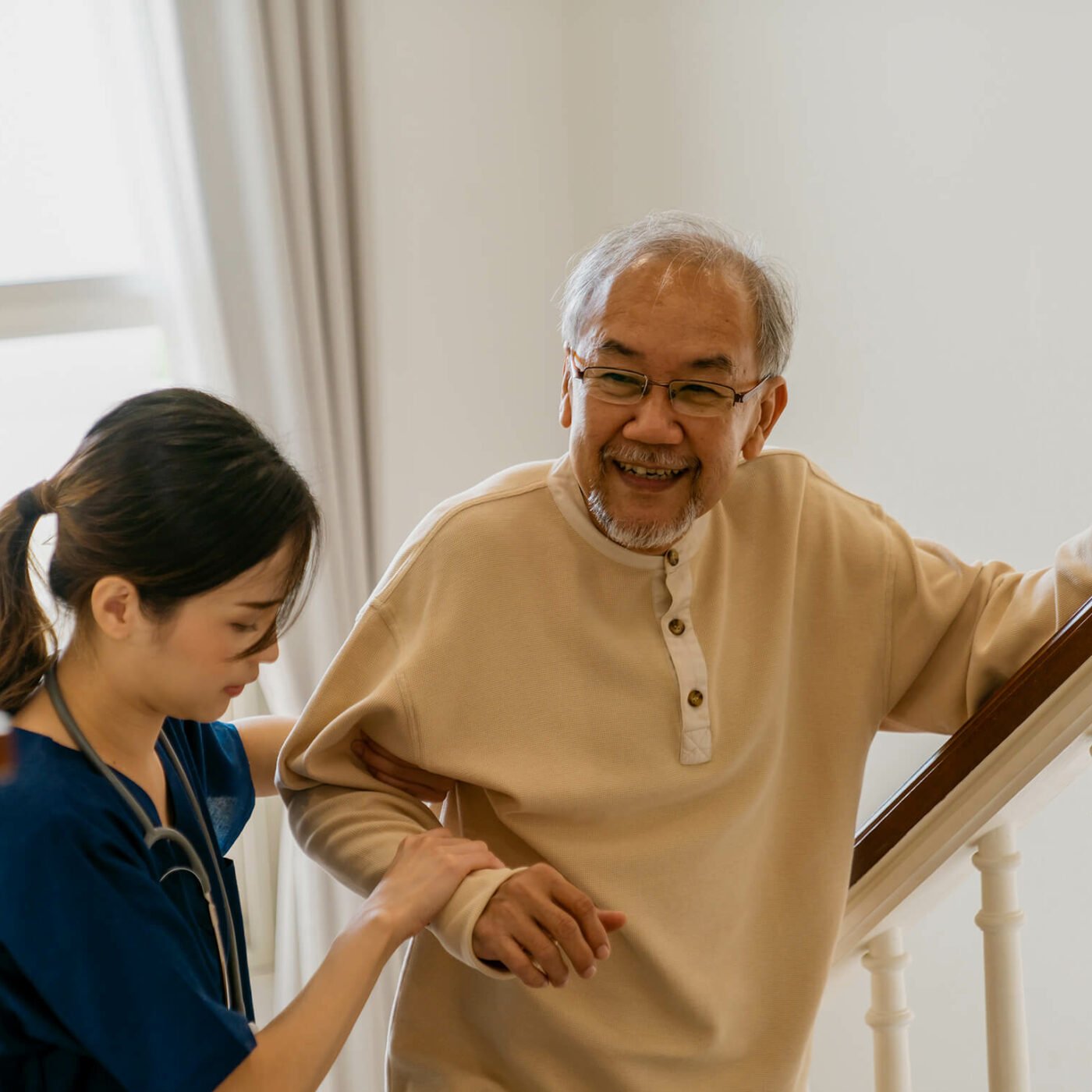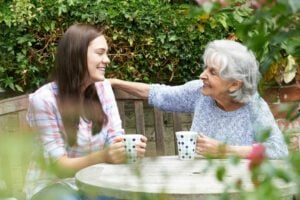How to make stairs safe for the elderly
Tags
Elderly Mobility and Independence
Some staircases are more hazardous than others, so take time to examine all steps and stairs around your loved one’s home, to see whether simple improvements could make a difference to their safety.
Make alterations to open tread stairs
Open tread stairs are particularly hazardous, as they trick the eye, and can cause confusion, particularly for those living with dementia. It may not be practical or convenient, to completely replace a staircase, but simply boxing in open tread stairs can make a big difference in stair safety.
Add handrails
Most staircases have a handrail or bannister to one side, but for elderly people who may be unsteady on their feet, handrails on both sides of the stairs provide additional support.
Make sure that handrails are comfortable and sturdy and at a size that fits your elderly relative’s hand comfortably. The bars should be firmly secured to the wall at elbow height to provide maximum support. Be sure to test that they can hold an adult’s body weight without becoming detached from the wall or post. If possible, arrange for the handrail to continue a little further than the length of the staircase, for optimum safety.
Improve lighting
Dim or dark stairwells are an accident waiting to happen, particularly for an elderly person with failing eyesight, so ensure lighting is up to the task. Hire an electrician to install light switches at the top and bottom of the stairs, to encourage your loved one to switch them on and off as needed.
A desire to save money can cause many older people to attempt to negotiate stairs in darkness rather than leave a light burning continuously. Make sure that your relative’s eyesight is regularly checked and that prescription lenses are maintained at peak condition so that they can clearly see where they are stepping.
Appropriate stair covering
Old and worn stair carpets are a slip-and-trip hazard, so replace them with new, non-slip carpeting and have it installed by a qualified carpet fitter. It can be helpful to highlight stair nosings with non-slip tape in bright colours, particularly the top and bottom steps of a flight, which is where the majority of accidents occur.
Remove hazards
Rugs should never be placed close to a staircase, as they increase the risk of tripping and falling. Check stairs and steps for any potential dangers, such as items of furniture nearby that could cause your loved one to trip or stumble. Ideally, the route to a staircase should be clear, well lit and uncluttered.
Appropriate footwear
If your loved one experiences any mobility problems, the correct footwear can be helpful, providing excellent grip and support for the feet. Old or worn shoes and slippers should be thrown out and replaced with sturdy and practical footwear with a non-slip sole.
Stair safety techniques
You may need to spend time teaching your elderly relative techniques for negotiating stairs more safely. High quality live-in care agencies, such as those offering dementia care, will provide carers who can offer support for most trips up and down the stairs. It’s still worth taking the time to go over stair safety from time to time, to make sure that the message is retained and understood.
Encourage your loved one to take the stairs slowly, concentrating on one step at a time. Trying to rush will almost certainly lead to an accident eventually, so exercise patience and emphasise the importance of taking time over every step.
Extra caution needs to be employed if your loved one uses a mobility aid, such as a walking stick which, used incorrectly, has the potential to become an additional hazard, rather than a method of support.
Your loved one may benefit from a visit by a physiotherapist, who can show them safer ways of negotiating stairs, particularly if they have experienced a stroke or symptoms of dementia, which can affect their depth perception, making stairs even more hazardous for them.
Stair aids
Special stair-climbing aids are available that can effectively lower the height of each tread on a staircase, Comprising a walking stick attached to a large flat box, the aid provides a stable support mid-way between each tread.
Over time, it may be worth investing in a dedicated stair lift, which will make it easier than ever for your loved one to negotiate a staircase on their own.
Read more care guides

How to prepare for a live-in caregiver
Care at home: how to prepare the home for a live-in caregiver A live-in carer can make a massive difference to your loved one’s quality

6 tips for finding the right live-in carer
Finding the right live-in carer is a significant and deeply personal decision, impacting your loved one and the entire family. You’re seeking someone trustworthy, compassionate,

The cost of care – everything you need to know
The true cost of care – everything you need to know Discover the true cost of care and explore your funding options with our care

Understanding autism in older adults
While Autism is usually diagnosed in childhood, an increasing number of older adults are being formally diagnosed in later life. Masking autism symptoms can result

A guide to speaking with a loved one about home care
Why do older adults resist care? A guide to speaking with a loved one about home care Bringing up the topic of care at home

How to choose the right personal alarm for seniors: A comprehensive guide
Personal alarms for elderly Discover how personal alarms work, who they’re best suited to, and how they provide greater peace of mind to older people